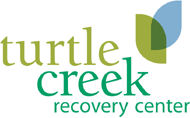After Rehab
Many people think that by completing a drug rehab program they will permanently “fix” their drug addiction. However, because the disease of addiction is currently incurable, it rarely works out this way. But because addiction is a manageable disease, having the right after-care plan after treatment is essential to keeping your addiction at bay. This is why the most important thing you can do before your treatment is over is to plan a course of action post-rehab; so that you can carefully layout your recovery strategy after your rehab is complete.
Since drug rehab is only the first step in a life-long battle against addiction, choosing a good after-care drug rehab program is essential in order to stay clean for the long haul. And two of the most popular and effective after-care options available are Sober living environments and Half-way houses.
Sober Living Environment
Sober living environments, also known as SLE’s, are houses that serve as an interim residence for recovering addicts transitioning between drug rehab and regular society. Sober living environments provide recovering addicts with a place to stay that is structured and supportive, while being filled with like-minded individuals who are also struggling with the same problems and temptations. Many studies on SLE’s have shown that sober living environments are an effective tool in the recovery process because is removes struggling individuals from situations that can reduce their chances at staying sober. Not only do these individuals benefit from living in a structured and supportive sober community, but they also feel less pressure to use in this environment.
The most important rule at a SLE is an absolute zero tolerance for any kind of drugs or alcohol. Most SLE’s do random or surprise alcohol and drug testing, with a positive test meaning immediate removal from the facility. Each individual is required to be financially self-supporting, meaning they have to pay their own rent, pay for utilities, and purchase their own food. Most SLE’s require individuals to work, actively seek employment, or be enrolled in some type of trade school or college. All residents are required to attend mandatory drug and alcohol meetings every week and are required to do daily chores around the house. Individuals can live at sober living environments for years at a time, but most places require a minimum stay of at least 2-3 months.
Halfway Houses
Halfway houses are very similar to sober living environments with the only real difference being half way houses offer more programs in the way of therapy, job training, and job placement. Just like SLE’s, halfway houses have a zero tolerance policy towards drugs and alcohol and require its residents to pass mandatory drug screening tests to continue to stay at the house. Some halfway houses may require you to stay for a period of 3 months to a year, and you must attend mandatory 12 step meetings. While most halfway houses generally allow you to come and go as you please, you are not allowed on the premises under the influence of drugs or alcohol.




